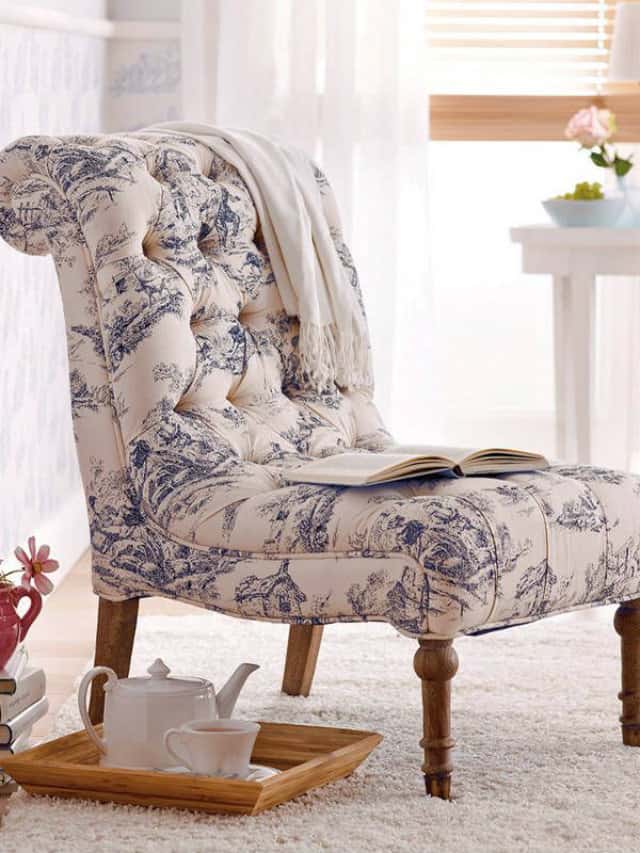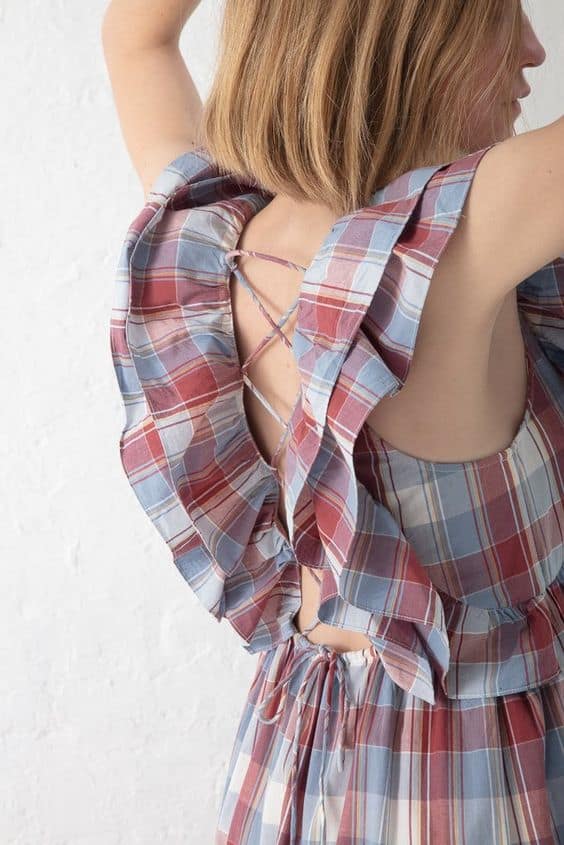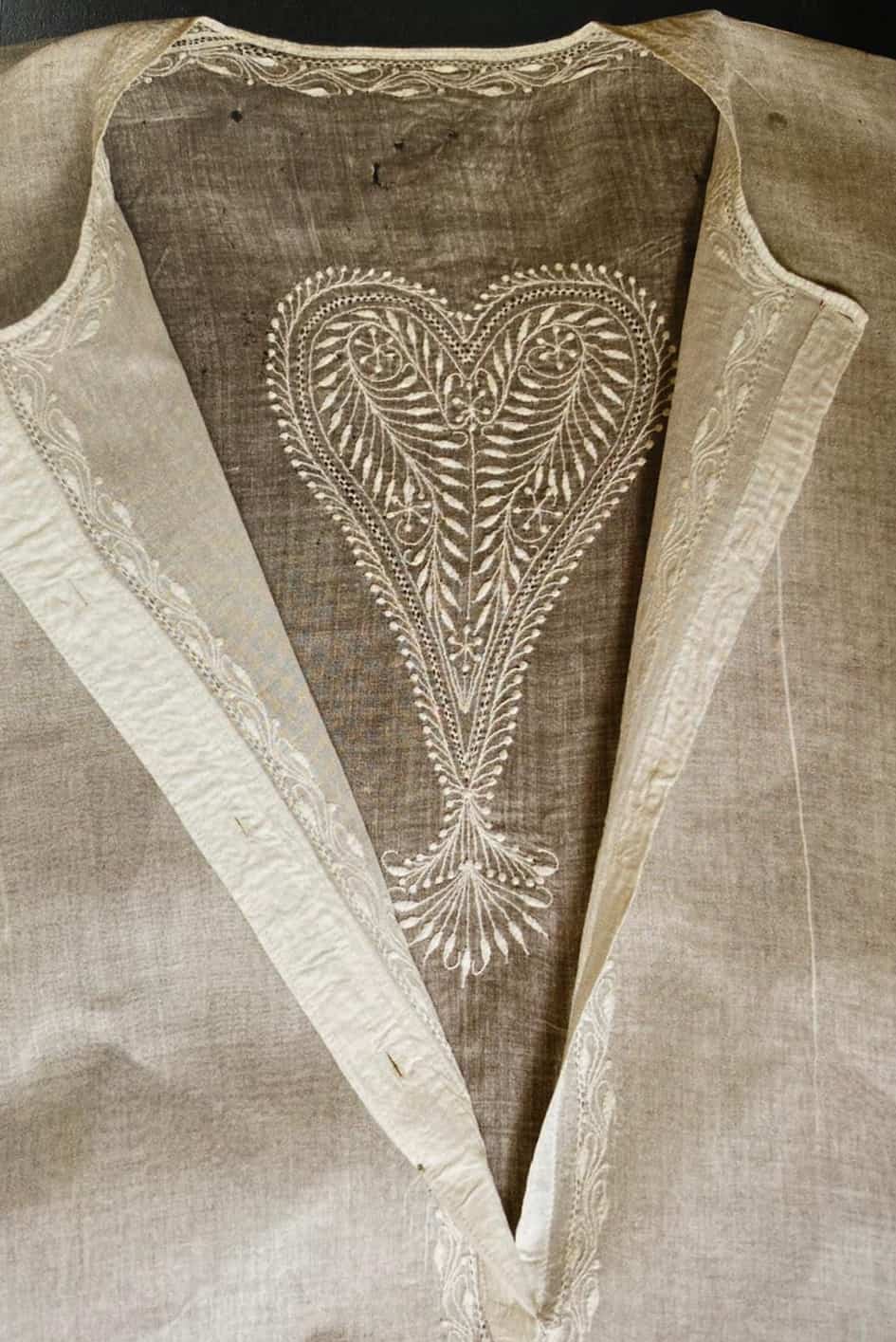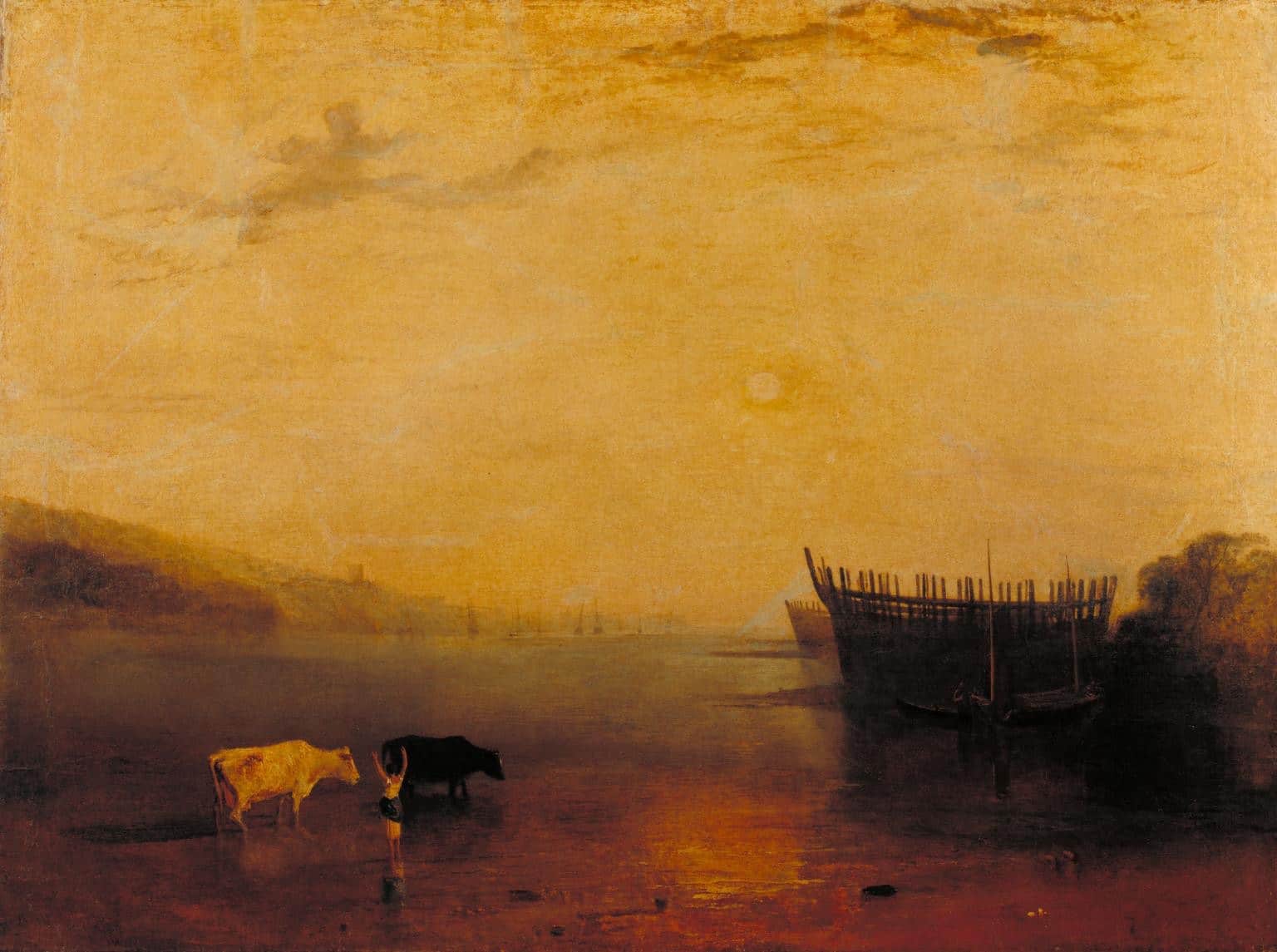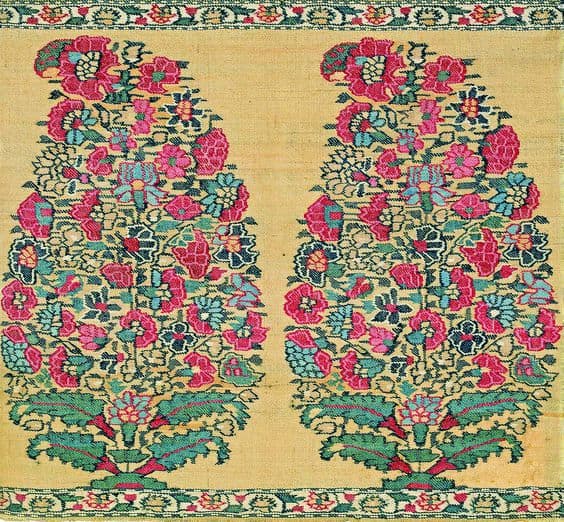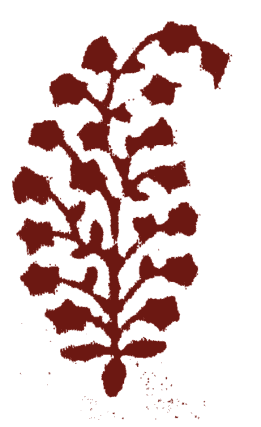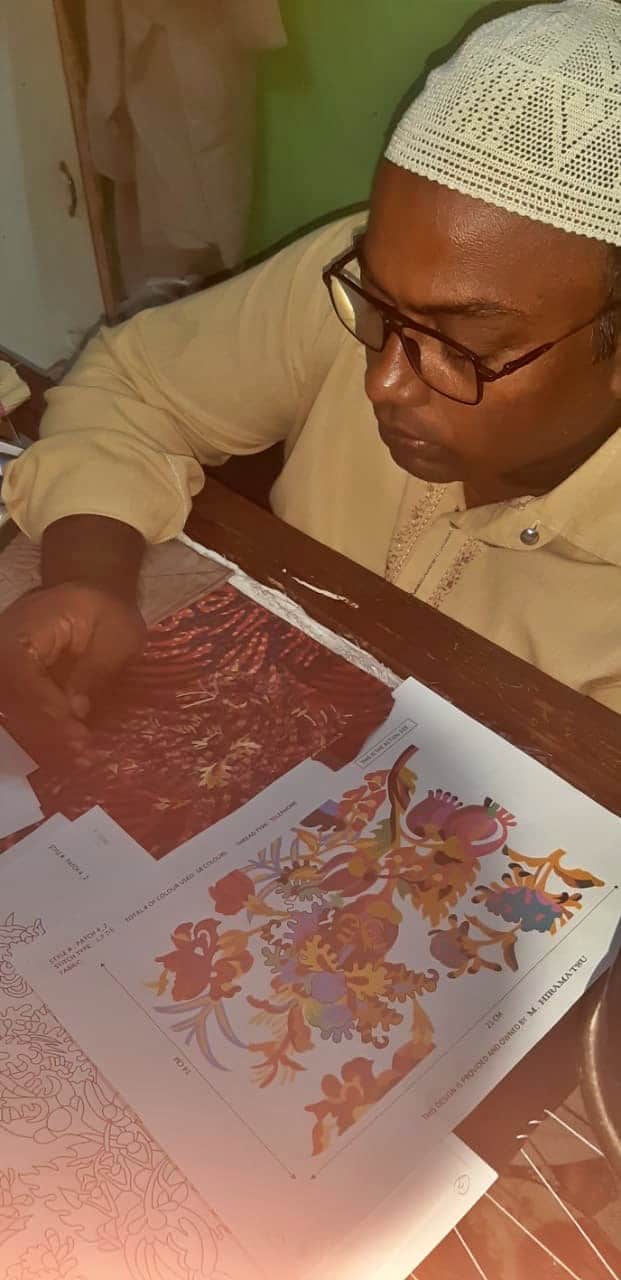[vc_row css_animation="" row_type="row" use_row_as_full_screen_section="no" type="full_width" angled_section="no" text_align="left" background_image_as_pattern="without_pattern" css=".vc_custom_1587020762781{border-right-width: 1px !important;padding-right: 30px !important;border-right-color: #000000 !important;border-right-style: solid !important;}" z_index=""][vc_column width="1/2" css=".vc_custom_1586996033135{padding-top: 5px !important;}" offset="vc_col-xs-6"][vc_single_image image="1259" img_size="large" add_caption="yes" qode_css_animation=""][/vc_column][vc_column width="1/2" offset="vc_col-xs-6"][vc_column_text]

Gulzar Ansari working at his home atelier in Delhi
[/vc_column_text][/vc_column][/vc_row][vc_row css_animation="" row_type="row" use_row_as_full_screen_section="no" type="full_width" angled_section="no" text_align="left" background_image_as_pattern="without_pattern" css=".vc_custom_1587020671675{border-right-width: 1px !important;padding-right: 30px !important;padding-left: 10px !important;border-right-color: #000000 !important;border-right-style: solid !important;}" z_index=""][vc_column offset="vc_col-xs-12"][vc_separator type="normal"][vc_column_text]
The opportunities to work with highly skilled artisans has always made us appreciate an idea's elusive – soulful journey to a finished product. The artisans are experienced in their crafts and are also opinionated about design. We share viewpoints, laughter, and sometimes disagreements while trying to achieve a similar outcome. Marasim works with Master embroider Gulzar out of his own creative space. Thus, with time, Gulzar's workplace has become our second home, and every detail about him and how he works has become an everlasting memory. The way he uses his stained but gorgeous old teapots and always sits and works by the window sill that is always half covered with an old embroidered mesh and how we make small conversations about our families, past, hopes, and our future. These relationships are the foundation of Marasim. Our collected glints of pure gold. In these unprecedented times, we are opening up our box of stories with the hope that they will inspire some hope and smiles. Gulzaar Ansari.
MEET GULZAAR ANSARI
Meet Mohd. Gulzar Ansaari an unsung hero of fashion. Gulzar is based in New Delhi, India. Having been born and brought up in Delhi, he is a true 'Delhiite.' He lives there with his siblings, wife, and kids. They are a huge family and a very talented one too. Gulzar and his family have been practicing Aari and Zardozi embroideries at their home atelier for nearly 22 years. He vividly remembers his grandfather practicing these embroideries and fondly shares the memories of his mother spending hours on the hand embroidery frame. In his own words, "All of us, brothers and sisters, grew up playing around these frames and embroideries."

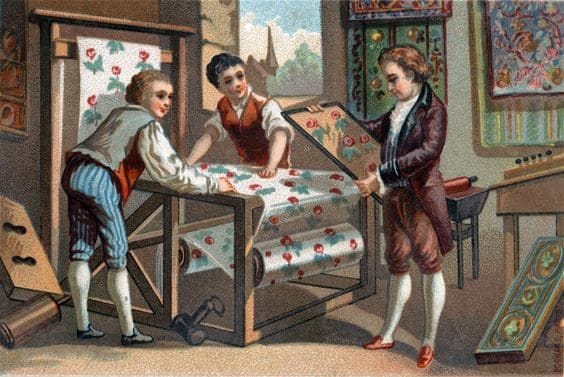 In 1785 Christophe-Philippe Oberkampf invented the first machine for printing wallpaper, later printing on cotton fabric at his factory in Jouy-en-Josas, hence the prints were known as Toile de Jouy[/caption]
In 1785 Christophe-Philippe Oberkampf invented the first machine for printing wallpaper, later printing on cotton fabric at his factory in Jouy-en-Josas, hence the prints were known as Toile de Jouy[/caption]

